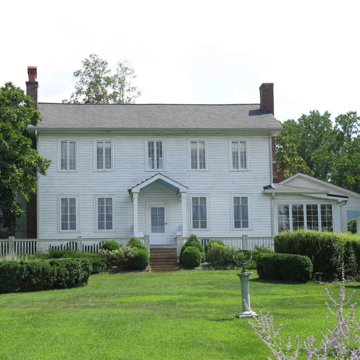In 1922 artist Alice Ferguson purchased property along the Potomac River as a country retreat for herself and her husband, Henry Ferguson, a prominent U.S. Geological Survey scientist. Following Alice Ferguson’s designs and vision, they soon began building a two-story Colonial Revival-influenced farmhouse on the hilltop, surrounded by outbuildings and gardens. Ferguson also developed a landscape plan that responded to the varied terrain of the site, including an entrance drive that winds through a steep, wooded ravine and opens to the meadows and gardens around the house with stunning views of the Potomac. Agricultural building complexes on the 130-acre parcel supported her development of a working farm.
Dubbed Hard Bargain Farm, the Fergusons’ retreat hosted a group of regular visitors that included architect Charles Wagner and sculptor Lenore Thomas Straus. An avid amateur archaeologist, Ferguson directed her friends in digs along the river-bank that ultimately led to discovery of the Accokeek Creek site, one of the most important in the nation for understanding Native American societies of the East Coast. She was also instrumental in creating the surrounding Moyaone Reserve, a pioneering land conservation entity dedicated to environmental stewardship and preserving the viewshed across the river from Mount Vernon through low-density development and scenic easements. In 1957 the Accokeek Foundation was created by Moyaone Reserve residents and the Mount Vernon Ladies’ Association to hold key pieces of viewshed land in public trust. Hard Bargain Farm is now an environmental center operated by the Alice Ferguson Foundation, with a portion of its original acreage comprising Piscataway Park.


